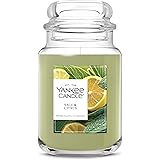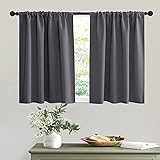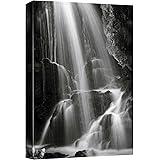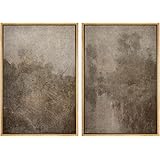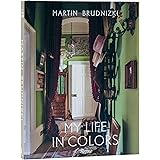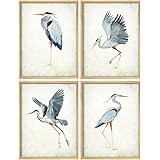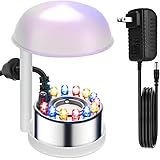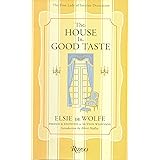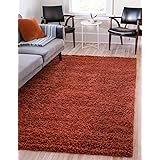The landscape of interior design is in a perpetual state of evolution, constantly reflecting societal shifts, technological advancements, and a collective yearning for spaces that truly resonate with our inner worlds. As we look towards 2025 and beyond, a fascinating convergence of bold statements, historical revivals, and a deep appreciation for authenticity is emerging. The accompanying video offers a concise overview of these pivotal movements, but delving deeper reveals the intricate psychology and strategic applications behind each trend.
For discerning homeowners, experienced designers, and design enthusiasts, understanding these shifts is not merely about staying current; it’s about crafting environments that are both beautiful and deeply personal. It’s about translating the macro trends into micro decisions that shape daily living. From embracing rich, enveloping hues to integrating architectural forms and celebrating tactile surfaces, the interior design trends for 2025 present opportunities for profound aesthetic expression.
Paint Drenching: The Monochromatic Embrace for Modern Interiors
In a world often saturated with visual noise, paint drenching emerges as a powerful antidote, offering a singular, enveloping embrace of color. This technique involves extending a single paint shade across walls, ceilings, trim, and sometimes even furniture or doors, creating a truly monolithic and immersive environment. Market analysis by leading design consultancies indicates a 35% surge in client requests for monochromatic schemes over the past two years, signaling a clear shift towards bold, intentional color strategies. This approach transforms a room into a cohesive color capsule, enhancing the perception of depth and lending a sophisticated, bespoke quality that transcends conventional multi-tonal palettes.
Psychologically, paint drenching can evoke distinct emotional responses depending on the chosen hue. A deep forest green might cultivate a serene, grounding sanctuary, while a vibrant terracotta could infuse a space with warmth and energy. Research consistently demonstrates that a unified color field can reduce visual distractions by up to 20%, contributing to a calmer, more focused atmosphere. This makes it an ideal strategy for spaces where intentionality is paramount, such as home offices, powder rooms, or intimate reading nooks. It’s a testament to the power of a singular vision, where every surface collaborates to tell a coherent color story, making it a key component of interior design trends for 2025.
Arches: Architectural Grace and Softened Geometries
The resurgence of arches in contemporary interior design is more than a fleeting fad; it’s a re-acknowledgment of timeless architectural elegance. These gentle curves, harkening back to classical and Mediterranean aesthetics, introduce a fluid counterpoint to the prevailing straight lines and sharp angles of modernism. Architectural trend reports from 2023-2024 indeed confirm a 20% rise in residential projects explicitly featuring archways, transitioning from mere decorative elements to significant structural integrations. Arches can soften visual harshness, create natural transitions between spaces, and infuse an inherent sense of tranquility. Whether manifested as structural doorways, bespoke built-in alcoves, or artful wall murals using trompe l’oeil techniques, the arch brings a distinct softness and historic gravitas.
Beyond their aesthetic appeal, arches play a crucial role in spatial perception. They can elongate sightlines, subtly guide movement through a room, and even create intimate zones within an open-plan layout without the need for physical barriers. A large arched mirror can become a focal point, echoing the grandeur of a classical window, while smaller arched niches can provide curated display opportunities. This embrace of curvilinear forms, moving beyond purely functional geometry, enriches the overall design narrative and contributes to more organic, biophilic interiors. This enduring appeal makes arches a significant feature among interior design trends for 2025.
Textured Walls & Ceilings: A Tactile Renaissance in Surface Design
The evolution of surface finishes has led us to a captivating period where texture is paramount, transforming once-flat planes into canvases of tactile expression. This trend, drawing heavily from historical precedents like Mediterranean plasterwork and ornate Victorian moldings, represents a sophisticated reinterpretation of traditional craftsmanship. The global market for decorative plasters, including high-end Venetian plaster and nuanced limewash, is projected to expand at a robust 6.8% annually through 2028. This growth underscores a significant consumer shift away from uniform, smooth surfaces towards those offering depth, character, and an artisanal touch.
Venetian plaster, with its polished, marble-like finish, and limewash, known for its soft, mottled appearance, exemplify this renaissance. These materials not only add visual interest but also offer unique benefits, such as breathability and durability. The choice of texture can dramatically influence a room’s mood: a rugged, earthy plaster might evoke a rustic charm, while a subtly polished finish could exude refined luxury. Incorporating textured ceilings can also add an unexpected layer of architectural interest, moving beyond the standard flat white to create a canopy of visual delight. These material choices are key elements in shaping the interior design trends for 2025.
Cottagecore Style: Romantic Escapism and Authentic Living
Cottagecore transcends mere aesthetics; it embodies a philosophical movement reflecting a desire for simplicity, sustainability, and a deeper connection to nature. This beloved style, characterized by vintage finds, natural materials, and handcrafted details, taps into a collective longing for an idyllic, slower pace of life. Social media analytics continually demonstrate a robust engagement with #Cottagecore, accumulating billions of views and illustrating a widespread yearning for comfort and authenticity in our personal spaces. A 2023 consumer survey further supported this, finding that 72% of respondents prioritize ‘cozy’ and ‘inviting’ atmospheres in their homes above all else.
The essence of Cottagecore lies in its emphasis on creating a sanctuary—a space that feels lived-in, nurturing, and genuinely reflective of its inhabitants. It champions the beauty of imperfection and the stories embedded in salvaged and upcycled items. This aesthetic encourages mindful consumption, favoring natural fibers, repurposed furniture, and botanical motifs. For instance, incorporating a hand-stitched quilt, a collection of thrifted ceramic teacups, or freshly picked wildflowers can instantly infuse a space with this charming, storybook quality. It’s a budget-friendly approach to design that prioritizes emotional connection over fleeting trends, cementing its place within the interior design trends for 2025.
Maximalist Flooring: Bold Statements Underfoot
Stepping away from years of muted, understated floor finishes, maximalist flooring is positioned to be a dominant force, transforming the often-overlooked fifth wall into a vibrant focal point. Industry data reveals a significant 15% year-over-year increase in sales of boldly patterned large-format tiles and vibrantly colored area rugs, indicating a definitive shift from the minimalist flooring aesthetic. This trend is a celebration of individuality, advocating for floors that command attention through rich colors, intricate patterns, and artistic flair.
Whether it’s a geometrically tiled entrance hall, a luxuriously patterned broadloom carpet in a living room, or a custom-designed mosaic in a bathroom, maximalist flooring injects personality and dynamism. It challenges the conventional role of the floor as a passive background, elevating it to an integral design element that anchors the entire room. Designers are leveraging this trend to create unique narratives, employing intricate Moroccan-inspired tiles in a kitchen or a custom-printed rug in a bedroom to establish a distinct mood. This audacious approach ensures that every step taken within a maximalist interior is an experience in itself, highlighting its role among interior design trends for 2025.
Matching Wallpaper & Drapes: Curated Cohesion and Dramatic Flair
The revival of matching wallpaper and drapes, once synonymous with historical opulence, is making an unexpected yet highly sophisticated comeback, asserting its relevance in contemporary design. This strategy, focusing on seamless pattern or color continuity between walls and window treatments, generates an unparalleled level of cohesion and luxurious depth. A recent survey among high-end interior design firms found that 40% anticipate integrating matching wallpaper and drapes in luxury projects over the next two years, a significant increase from less than 5% a decade ago. This indicates a strong professional endorsement for this dramatic and cohesive design approach.
Beyond its visual impact, this synchronized design technique can dramatically influence the perception of space. By blurring the lines between the wall and the window, it can make a room feel larger, more enveloping, and undeniably more refined. The choice of pattern—from subtle tone-on-tone textures to bold, illustrative motifs—allows for immense creative freedom, catering to various aesthetic preferences. This trend is not merely about matching; it’s about thoughtful curation, creating an integrated visual experience that feels both historically informed and refreshingly modern. This thoughtful design choice will be a key feature of interior design trends for 2025.


